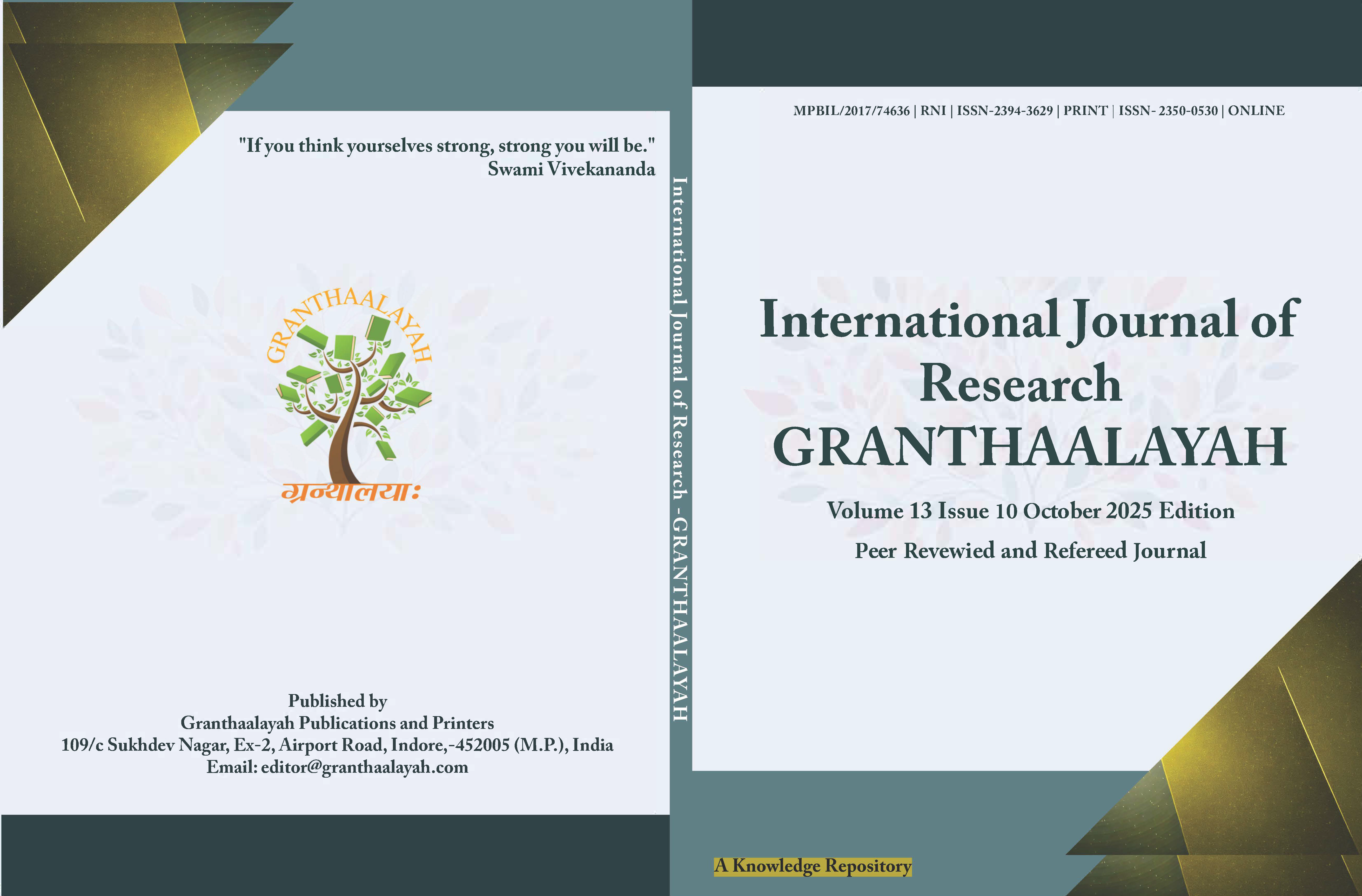CATHARSIS AND THE INDIAN MIND: UNDERSTANDING INTROVERSION IN PSYCHOSOMATIC HEALING
DOI:
https://doi.org/10.29121/granthaalayah.v13.i10.2025.6429Abstract [English]
Catharsis, the act of releasing deep, pent-up emotions, plays a powerful role in both psychology and homoeopathy. It serves as a bridge between mind and body, helping hidden feelings rise to the surface so that they can be expressed, understood, and eventually dissolved. This emotional release restores inner balance and strengthens the body’s vital force, paving the way for true healing.
This article sheds light on how emotional suppression and introversion shape the health of individuals in Indian society. Traditionally, Indian culture values emotional restraint and collective harmony. While this fosters social stability, it also encourages people to keep their emotions bottled up. Over time, this inward tendency can contribute to a range of psychosomatic disorders, illnesses that reflect the impact of the mind on the body, including digestive problems, skin conditions, anxiety, and hypertension.
This researches work highlights how catharsis can be a crucial step in recovery. By allowing people to express repressed feelings in a safe, conscious way, emotional energy is released and healing can begin. Homoeopathy naturally supports this process, as it considers the emotional and mental state an integral part of treatment. Remedies suited to introverted constitutions help patients open up, facilitating both emotional release and physical improvement.
Through clinical insights, cultural understanding, and homoeopathic principles, this article explains why catharsis is not just a concept but a practical tool for healing psychosomatic diseases. It encourages practitioners to create spaces where patients feel safe to express their inner worlds, because when emotions find their voice, the body often finds its relief.
Downloads
References
Anjoumedecine.free. (n.d.).
Clark, D. (n.d.). Leadership / Communication.
Hahnemann, S. (1990). Organon of Medicine (6th ed., W. Boericke, Trans.). B. Jain Publications.
Hay, L. L. (n.d.). Heal Your Body. Internet Archive.
Hpathy. (n.d.). Mental Symptoms Treatment.
Kent, J. T. (1919). Kent’s Lectures on Homeopathic Philosophy.
Kent, J. T. (2004). Repertory of the Homoeopathic Materia Medica (6th ed.). B. Jain Publishers.
Khanna, R. (n.d.). Textbook on Psychology.
Kundu, R. (2008). The mind and the Matter. Materia Novum, Annual Magazine of Motiwala (National) Homoeopathic Medical College, Nashik, India.
Macleod, J. (2018). Macleod’s Clinical Methods (14th ed.). Churchill Livingstone Elsevier.
Modules I to VI of MS I / PGDPC and I to IV of MS II. (n.d.). [Curriculum reference].
Ortega, P. (1980). Notes on the Miasms. B. Jain Publishers.
Psychosomatic Medicine. (n.d.).
Rajendran, E. S. (2007). New Lights: Lectures on Homeopathy. Homeobook Publishers.
Schroyens, F. (n.d.). Synthesis Repertory (Version 9.1).
Sehgal, M. L. (n.d.). Rediscovery of Homoeopathy (Vols. 1–10).
Shankaran, R. (2005). The Mind. Homoeopathic Medical Publishers.
Shankaran, R. (2014). The Soul of Remedies. Homoeopathic Medical Publishers.
SixWise.com. (n.d.).
Vijaykar, P. (1998). Miasmatism. Indian Books and Periodicals.
Waldinger, R. J. (2014). Textbook of Psychiatry (4th ed.). Cambridge University Press.
Wikipedia. (n.d.). Psychosomatic Illness.
Published
How to Cite
Issue
Section
License
Copyright (c) 2025 Prapti Kalda, Tapas Kundu, Rita Kundu

This work is licensed under a Creative Commons Attribution 4.0 International License.
With the licence CC-BY, authors retain the copyright, allowing anyone to download, reuse, re-print, modify, distribute, and/or copy their contribution. The work must be properly attributed to its author.
It is not necessary to ask for further permission from the author or journal board.
This journal provides immediate open access to its content on the principle that making research freely available to the public supports a greater global exchange of knowledge.

























